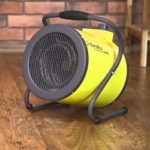Comparison of heat gun and infrared heater
Additional heat sources are most often relevant in conditions where the possibility of carrying out heating systems is not provided. There are many alternative offers on the market, among which are favorites. One of the main dilemmas is the question: what is better to choose a heat gun or an infrared heater? Let's try to solve it.
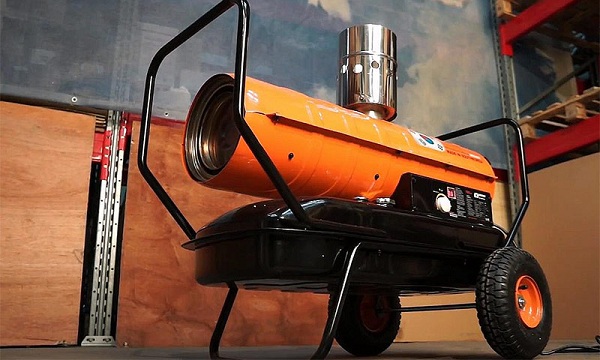
Content
Features of the instrument
The task of both devices is to create a comfortable and warm atmosphere in the room. But the principle of achieving the goal they will have different. It's all about the features of the functioning of technology.
Heat gun
There are many types of such devices, the only difference is in the type of fuel used. Most often they use fire or electricity. It unites all of them - heating will be supplied under pressure from the air masses. In practice, the work "with fire" will look like this:
- Under pressure in the combustion chamber is a jet of fuel.
- The fan creates a stream of air that is directed to the already heated sources of heat.
- The air warms up to about 200 degrees. The temperature of the camera itself at that moment reaches 800 degrees.
- The jet burns in the air stream.
- The waste product (carbon monoxide) is removed to the chimney.
- Involved electricity, which is necessary for rotating the fan and the fuel pump of the engine.
It is very important when installing to consider all the rules of fire safety.
Feed the device can and current. If in quality electric heater heat gun is used, it is quite suitable for residential premises (being safer in everyday life). Only in this case are involved heating elements made of ceramics and stainless steel.
A heat gun heats the room with continuous punches. Instead, it uses kernels air flow. Power of work allows in a few minutes to warm up large areas of the room.
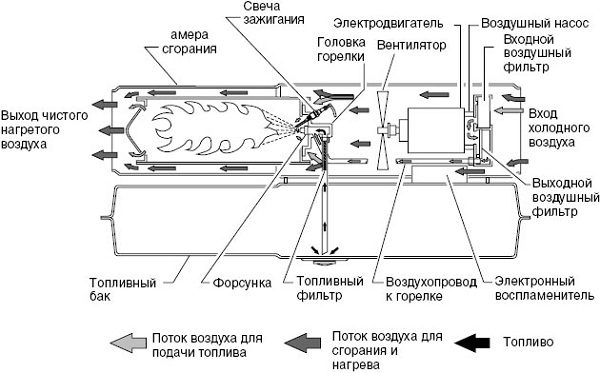
The principle of operation of the heat gun
Infrared equipment
The basis of the infrared radiation source is the action of electromagnetic waves. They have a certain length that corresponds to the spectrum. An interesting fact is that only non-reflecting objects will be affected - if the surface is shiny, white and transparent, it will remain cold.
The very same air will then heat up from objects - and this is a big plus device. Even after turning off the device, the atmosphere will remain pleasantly warm for a long time (airing of the room will not prevent this). So you can talk about saving energy spent on heating.
There are other advantages in using such efficient devices:
- environmental friendliness (oxygen is not burned and there is no unpleasant smell);
- ease of installation;
- versatility and aesthetics.
However, it was not without drawbacks - it is worth getting out of the comfort zone, as it feels cold. And if such an IR heater is not placed correctly, it may occur headache. It appears due to the resonances of the thermal zones of the body, especially when only one part of it is heated. And doctors are just sure that it is these devices that are the culprits of dry skin and cast doubt on the safety of a long stay near the infrared radiation.
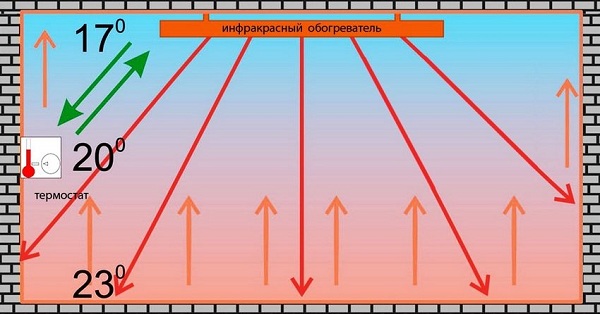
The principle of operation of the infrared heater
Scope of heat guns
Not all facilities can be heated (and in some cases, for example, in open spaces, it is even pointless to do this). Here can help out a heat gun.
The fuel used imposes some restrictions on the scope of such devices. This is especially clearly seen in the case of gas options - they are used in rooms where people are not permanent. Most often these are warehouses, production premises, trading floors, pavilions and construction sites.
There is a specificity in electrical units. First of all, we must remember about the high cost of electricity - they are rationally used only for local heating or in rooms with a small square. For the latter case are used compact models (the device will have a power of only 2-3 kW).There is also a limit on the temperature range - from -10 to 35 ° C, which also need to pay attention.

The possibility of using infrared heaters
Such equipment can work both on electricity, and on gas, and even liquid (for example, diesel) fuel. Each type is good for a separate application.
- For example, a gas or oil-based model can be used when needed heating open areasFor example, a summer cafe or a playground. For an area of 25 square meters is quite suitable apparatus with an average power. The radiation in such models will be quite high-energy, so it is better that people stay in such a room for a short time.
- Electric option is more suitable for home use - here the heating element will operate at low temperature. And the waves produced are similar in length to those emitted by people themselves. The bonus will be the absolute durability and safety of its service.
Experts advise installing an infrared heater on the ceiling or other maximum height of the serviced area.This will help emitters to heat more space, and not just those items that are “on the way.”
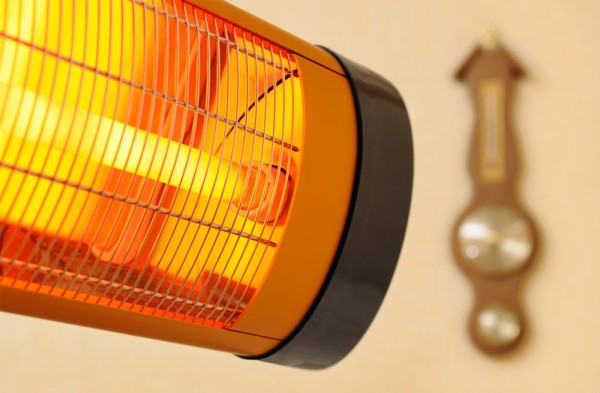
How to choose the right device
It doesn't matter which source the consumer chose. The main thing is quality products. You can not “look into” a low cost - such savings are absolutely not justified, since the products will be filled with poor quality wires and poor contacts. Quality products can be identified by the following features:
- strong and reliable case;
- thick insulated cable;
- great plug.
Doubtful devices carry the risk of not only quickly failing - the main danger here is in the likelihood of a short circuit. The result may be a fire, so you should not save on your own life.
Comparative effectiveness test
Doubts of users in choosing a particular type of device are clear. To understand this point, you can compare the heating rate of the atmosphere in a certain area of space. Take, for example, insulated garage of 20 square meters in the winter season. The object is interesting in that there are no other specially laid heating networks, so we will work from scratch.Since the ventilation is plugged in, it is best to use electrical versions of both devices.
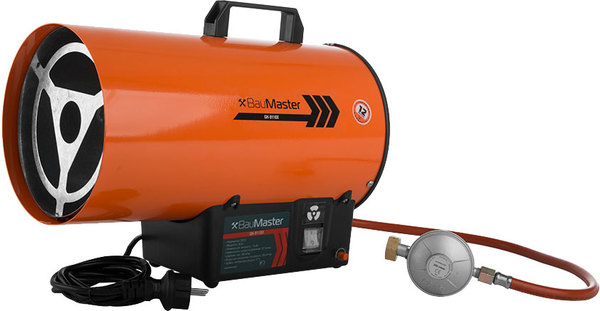
Bau Master Heat Gun
The Bau Master heat gun (made in Russia) and the popular Chinese infrared heater Ballu BHH / M-09 take part in the “competition”. The results can be seen in the comparative table:
| Heat gun Bau Master, 3000 W | Infrared heater Ballu BHH / M-09, 900 W, 4 pieces, hanging from the ceiling on opposite walls | ||
|---|---|---|---|
| Conditions | Result | Conditions | Result |
| Outside 0, inside + 18 | Warming up was carried out within 30-40 minutes. | Outside -14, inside +14 | The whole room was heated for half an hour, but the comfort of being in the impact zone comes after 10 seconds. |
| Outside - 5, inside + 15 | The room was heated for 1 hour. | Outside - 21, in the garage costs +8, together it turns out + 10 | It took 1 hour to create a warm atmosphere in the whole room, but it was warm at once in a radius of a meter from the heater. |
| Outside - 20, inside 0, in the end it turned out + 5 degrees. | Warming up occurs within one and a half hours, but it is impossible to work in such a room in the future. | ||
| The joint operation of both devices will give + 20 inside the garage at - 20 outside, but you should immediately get ready for large electricity bills. | |||
Of course, this experiment is far from an ideal indicator of work, but, nevertheless, conclusions can already be drawn. Each consumer himself is guided by what unit to use, based on the parameters and purpose of the room, the desired heating rate, power technology and other relevant indicators.

/rating_off.png)






